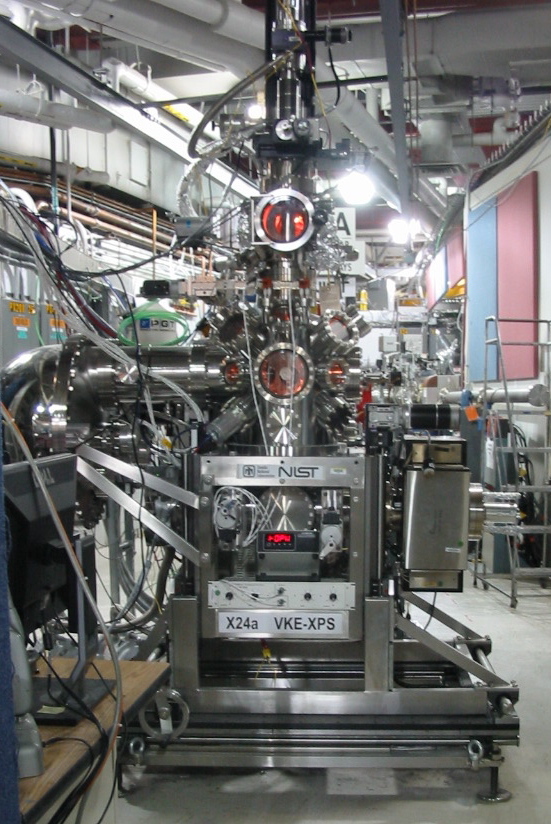Nobel Laureate Kai Siegbahn used the photoelectric effect with high energy light in a technique he called Electron Spectroscopy for Chemical Analysis (ESCA), now more frequently known as XPS, or X-ray Photoelectron Spectroscopy. Shining X-rays on samples and detecting the energies of ejected electrons provides information about a sample because electrons associated with each element of the periodic table are bound to their atoms with specific energies. The higher the energy of X-rays used, more tightly bound electrons can be ejected and may come from deeper in the sample. This is the physics that birthed HAXPES, high energy XPS I use to determine the makeup of a special film which grows on electrodes in cutting-edge batteries, though scientists are finding other exciting uses for the technique every day. It is a pretty recent innovation, at least in practice, made possible by a marvel of modern science – the synchrotron. Check it out!
Here’s a photo of the X24-A end station at the National Synchrotron Light Source (NSLS). NSLS was part of Brookhaven National Laboratory (BNL) on Long Island, NY. I performed HAXPES measurements there in collaboration with the National Institute of Standards and Technology (NIST), which operates X24-A. Sadly, NSLS was closed in 2014 to free up funding for NSLS-II across the street. We hope to get down there for more measurements as soon as the new beamline is up and running.

We’ve also worked on the same types of measurements at the Canadian Light Source in Saskatoon, on the campus of the University of Saskatchewan. Here’s a nice panoramic of the experimental hall.
